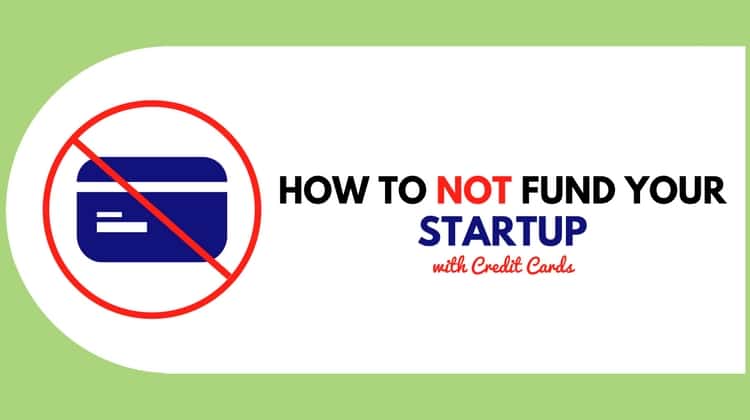
I attended a startup event the other day. It was a fireside chat with an accomplished business founder who now owns over 350 locations, worldwide. As this founder was going over his entrepreneur journey, he mentioned how he funded his startup using credit cards and how he applied for 15 of them.
This is not the first time I’ve heard of an entrepreneur funding his/her company using credit cards, but as he was telling the story, it struck me. What about the rest of us? What about those of us who are planners and starting companies while trying to not use credit cards to fund the company? Do we not fit into this risky entrepreneurship world because we are risk averse? Are we looked upon as playing it too safe?
Don’t get me wrong, I’m not saying don’t take risks, but planners don’t take them, if they can help it, unless they are calculated, and they have backup plans A, B, and C—just in case.
Here are four ways to fund your startup company without maxing out your credit cards:
1. Create a Plan to Fund Your Startup
Benjamin Franklin once said, “If you fail to plan, you are planning to fail.” So have a plan, and know what are you going to do. When will you start your business? When will you quit your day job? How much money do you need to survive until the venture takes off?
Planning includes having goals and deadlines. Even if you miss a couple of the deadlines (I missed mine by a year), adjust your plan and move forward. If you don’t have goals to work towards, then you are just wishing for good luck to happen.
Even if you’re not a planner, at least have a couple of goals to work towards. Tell your goals to someone who is not your best friend or family member. Why? Because best friends and family will cut you some slack, while a co-worker or an acquaintance will make you more accountable. You don’t want to come across as someone who doesn’t meet deadlines or is not truthful in their statements.
2. Start Your Business, or Idea, While Working Full Time
There has been a lot of advice given to founders who are starting a business that they should be focused on it full time. “All in,” they say. There is another school of thought, however, that believes in starting slow by working on it part time while holding a full time job. Either one makes a great case and they both work, depending on your circumstances.
In either instance, you can, at least, start the problem-solving and product market fit phases while you are working full time. While still working, you can start going to networking events to meet new people. You can build a prototype and show it to anyone who is willing to give you feedback. By doing whatever you can while you’re still working, when you do quit your day job, you won’t be starting from scratch.
3. Take Freelancing Jobs
If you are already working full time on your startup, then do the opposite of the previous point and work on your business full time while freelancing on the side. One question I hear a lot is, “How do I find these freelancing jobs?”
Websites like UpWork.com can certainty help, but you are competing with hundreds, if not thousands, of people around the world for the same job. Plus, you have to build a portfolio before you start getting good paying projects. This is where networking in your local city will work best.
Post your profile at a local startup job board or reach out to your network on LinkedIn, and let everyone know you are looking for part time work. Attend local networking events and mention you are looking for some freelancing work, while trying to get your startup off the ground.
4. Seek Funding from Family and Friends
Don’t believe all the hype about venture capital (VC) funding. Less than one percent of companies get VC funding, so it’s not an easy task. Most investors these days, including angel investors, want to see traction. They also want to see that someone else took a chance on you and believed in your dream, so having a friend or family member as a first investor is a big plus.
If you do get money to fund your startup from family and friends, make sure you have all the legal papers completed or it may hurt you later. If you don’t have family or friends with any money to spare, then you’ll need to fund it yourself, which is known as bootstrapping and goes back to the earlier points of saving money and watching your expenses.
It’s often not until you start your company and seek funding that you realize how hard it is, so make sure you have a plan. Maxing out your credit cards to fund your startup shouldn’t be your plan.
About the Author
Raya Khashab is the CEO and co-founder of ezClocker. She is passionate about customers and building products that change the way people run their business. She is also a big supporter of the startup community and helping people achieve their dreams.